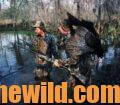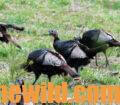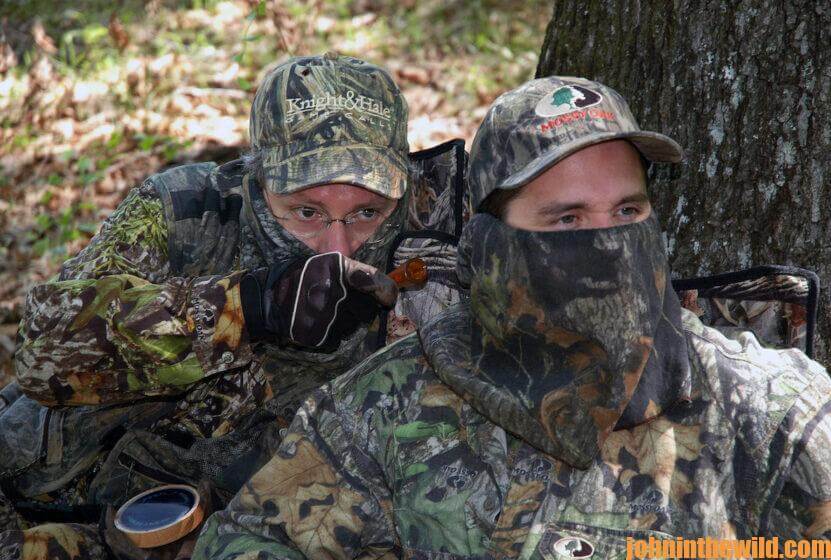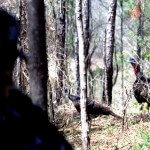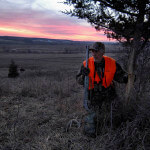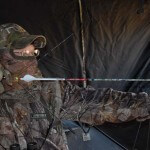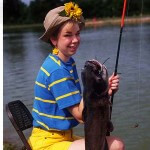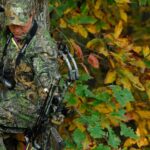Editor’s Note: The game of turkey hunting is played in the gobbler’s backyard and on his terms. The strategies required to bag a tom turkey often may make war games look simple. The hunters who have amassed the most techniques, encountered the most turkeys and know what to do when the turkey doesn’t do what he’s supposed to do, will come home with bronze barons for dinner more often than other hunters. By taking this turkey-hunting quiz and learning what to do to bag turkeys, you can sharpen the skills you’ll need in the woods when you play the game with the wisest wizards in the woods. (See the correct answer to each question at the end of each day).
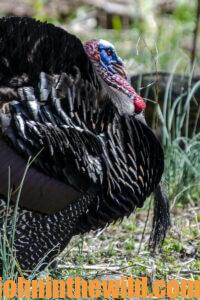 Question No. 4: Some smart turkeys have been so harassed by so-many hunters that they won’t come to calling. So, a sportsman must decide whether he wants to call turkeys or kill turkeys. If the hunter has decided to take this bird, what’s the best tactic to use?
Question No. 4: Some smart turkeys have been so harassed by so-many hunters that they won’t come to calling. So, a sportsman must decide whether he wants to call turkeys or kill turkeys. If the hunter has decided to take this bird, what’s the best tactic to use?
a) cluck three times and hush.
b) call a couple of times to determine which way a turkey’s walking, circle the bird, get in front of him and don’t call anymore, in hopes that he’ll walk in to where you are.
c) take a stand in the direction the turkey usually travels and wait on the bird to show-up, but don’t call at all.
Question No. 5: When you’re in an area with a large number of hens, and the gobbler won’t fly-off the limb or come to hen calling until he sees the female, how can you take that bird?
a) use a turkey decoy, if the procedure is legal in your state.
b) flush the gobbler, walk in the direction he flew off to and then attempt to call him back.
c) try and determine in which direction the hens normally feed after they meet the gobbler. Don’t do any calling, and take a stand on the hen’s feeding route.
d) none of the above.
e) all of the above.
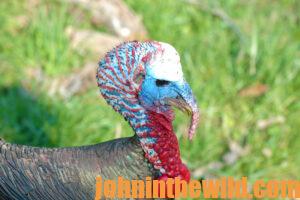
Question No. 6: Some mornings turkeys don’t gobble. However, there are methods that can be used to make them gobble. What’s the best tactic to use?
a) use a crow call.
b) call loudly.
c) call like a bluejay.
d) begin to gobble.
Question No.7: In high-pressure areas where there are many hunters in the woods, when’s the best time to bag a gobbler?
a) in the mornings early before the other hunters get out in the woods.
b) late in the afternoon just before fly-up time.
c) in the middle of the day when no one else is hunting.
ANSWERS:
Answer to Question No. 4: (b) call a couple of times to determine which way a turkey’s walking, and circle the bird, get in front of him and don’t call anymore in hopes that he’ll walk in to where you are. Even if the gobbler answers going away from you, you should be able to determine a turkey’s route of travel. With this information, you should have a good guess of where to set-up an ambush out in front of the gobbler.
Answer to Question No. 5: (e) all of the above. Any of these tactics will work on toms that have a large supply of lady friends.

Answer to Question No. 6: (a) use a crow call – The crow call is one of the most-effective calls to use to get a turkey to shock gobble (gobble as a reaction to a stimulus rather than gobbling for mating purposes). There’s just something about the high pitch of a crow call that seems to make hush-mouthed gobblers talk.
Answer to Question No. 7: (c) in the middle of the day when no one else is hunting. “I hunt in the middle of the day, because I’ve found that turkeys are less wary and easier to call in regions of high-hunting pressure,” explains Harold Knight, one of the founders of Knight and Hale Game Calls in Cadiz, Kentucky. “Turkeys learn outdoorsmen’s hunting patterns. After the season begins, most turkeys know that there will be fewer hunters in the woods from 10:30 am until 2:30 pm than at any other time of the day. So that’s when I hunt the hunter-shy gobblers.
“Middle-of-the-day hunting is slow hunting because 75 percent of the time the turkey won’t gobble before he comes in to where the hunter is waiting. I usually go to a place where two or three finger ridges come together into one hollow in an area where I know turkeys are supposed to be. Then I start calling and waiting. Many times I’ll wait an hour or two before I move. Usually, I never will hear the turkey until I see him. But a lot of good hunting is in the middle of the day when other hunters aren’t in the woods.”
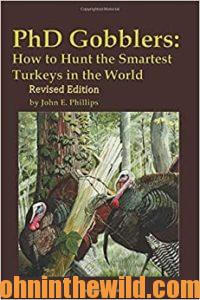 To learn more about hunting turkeys successfully, visit John E. Phillips’ Amazon book page at https://www.amazon.com/John-E.-Phillips/e/B001HP7K6O. For even more information from many of the top turkey hunters and callers, go to the book, “PhD Gobblers: How to Hunt the Smartest Turkeys in the World” at https://www.amazon.com/gp/product/B083V83RLG/ref=dbs_a_def_rwt_hsch_vapi_taft_p4_i11
To learn more about hunting turkeys successfully, visit John E. Phillips’ Amazon book page at https://www.amazon.com/John-E.-Phillips/e/B001HP7K6O. For even more information from many of the top turkey hunters and callers, go to the book, “PhD Gobblers: How to Hunt the Smartest Turkeys in the World” at https://www.amazon.com/gp/product/B083V83RLG/ref=dbs_a_def_rwt_hsch_vapi_taft_p4_i11
and available in Kindle, print and Audible. You may have to copy and paste this link into your browser. (When you click on the book, notice on the left where Amazon says you can read and hear 10% of the book for free). On the right side of the page and below the offer for a free Audible trial, you can click on Buy the Audible book.
Tomorrow: Turkeys Can Be Lured from Hens

